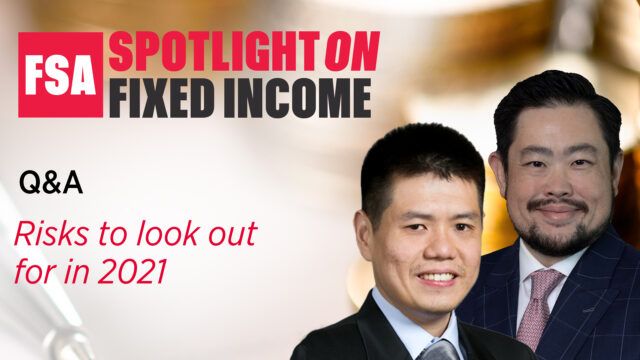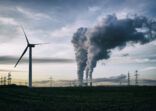What are the key risks that investors should be aware of this year?

Portfolio Manager, Eastspring Investments (Singapore) Limited
Rong Ren: The call for climate action has intensified this year, with major economies like the US and China committing to reduce carbon emissions. Pressure is therefore mounting on asset owners to divest investments which contribute significantly to climate change.
The technicals for issuers operating within sectors with a carbon intensive footprint will therefore become increasingly challenged, as demand for such bonds sag in the coming years, and issuers find their sources of financing increasingly constrained. This could lead to underperformance of such issuers’ bonds.
Some companies operating within these sectors have made concerted efforts to diversify out of existing businesses, but transition risks remain and their pace of transition will have to be monitored closely to ensure they are not at risk of being rendered irrelevant.

Executive Director, Head Intermediary Clients, Asia, Vontobel
Benny: In our view, by far the biggest risk to credit in 2021 remains a shock in relation to the COVID-19 pandemic. The rollout of various vaccines has offered investors a light at the end of the tunnel, resulting in a high degree of consensus around a very robust economic recovery in the second half of the year. However, this could change quickly if, for example, a new variant of the virus were to render one or more of the vaccines less effective and the large scale return to normality was threatened.
Interest rate duration has come more into focus with the Democrats taking control of the US Senate, boosting the prospect of further stimulus from the Biden administration and – in the view of some analysts – higher inflation pushing the Fed into earlier rate rises. Biden’s ‘Blue Sweep’ may change some investor projections, but while we do see inflation ticking up in 2021, we don’t see it becoming an issue for the Fed in the near term. Close to nine million US jobs disappeared in 2020, and that considerable slack in the labour market means it is hard to see wage pressures building, which in our view is the main factor that would prompt the Fed to tighten monetary policy.
We think inflation concerns are likely to surface as the year goes on as record stimulus continues to be poured on what we expect to be a robust recovery. We believe the upshot is likely to be a bear steepening of rates yield curves, in particular for US Treasuries.
What areas of the market are you currently avoiding?

Portfolio Manager, Eastspring Investments (Singapore) Limited
Rong Ren: We consciously avoid carbon intensive sectors, such as power generation companies from coal. This sector has high carbon and GHG emissions, with strong air pollution and contamination risks, causing strong environmental damage. Coal powered generators are typically the first sectors which asset owners seek to divest from to significantly reduce the carbon footprint of their portfolios, so they will be the first to see risk premiums rise significantly.
Metals and mining is another sector to avoid. The scope for environmental pollution is high, and mining activities often affect the ecosystems within which they operate . The environmental impact of metals and mining activities are often hard to mitigate as well, thus would be a natural exclusion to quickly “green” our investment portfolios.

Executive Director, Head Intermediary Clients, Asia, Vontobel
Benny: We would be wary of longer-dated government bond debt as yields reset higher. Similarly, high quality corporate debt may not have enough spread to compensate for this movement. Additionally we think investors should be wary of confusing a cyclical downturn with structural change and disruption in certain industries. Travel and hospitality are sectors clearly that look to have been worst hit by the pandemic, but retail and automotive for example were already under pressure from structural change pre-Covid-19. Commercial property is another sector facing accelerated structural change due to the pandemic.
With the prevailing market conditions, investors need to be aware that passive products is not bringing major benefits, as passive vehicles tend to aggregate government bonds, long dated, fixed income instruments that are vulnerable to correction and offer low spread and long duration, which are not suitable for investors looking for income. In addition, passive portfolios cannot adapt to rapidly changing market conditions. For example, if you look at the kind of portfolio that you needed to hold this time last year, to the kind of portfolio you’re probably holding in October last year, to the one that you might be holding for the rest of this year, those are three different portfolios in a rather short timeframe. Hence, in a rapid moving cycle, such as this one, if you are to use passive, you need to be a very active passive investor. Therefore, in our opinion, the right thing to do is just to invest actively in the first place.
The Fund Selector Asia Spotlight On: Fixed Income will run on 3 – 6 May and ends with a LIVE event (on the 6th) where we will bring together a panel of fund selectors and the fund managers to discuss their views and join an interactive Q&A session.
Find out more about our Spotlight On: Fixed Income

















